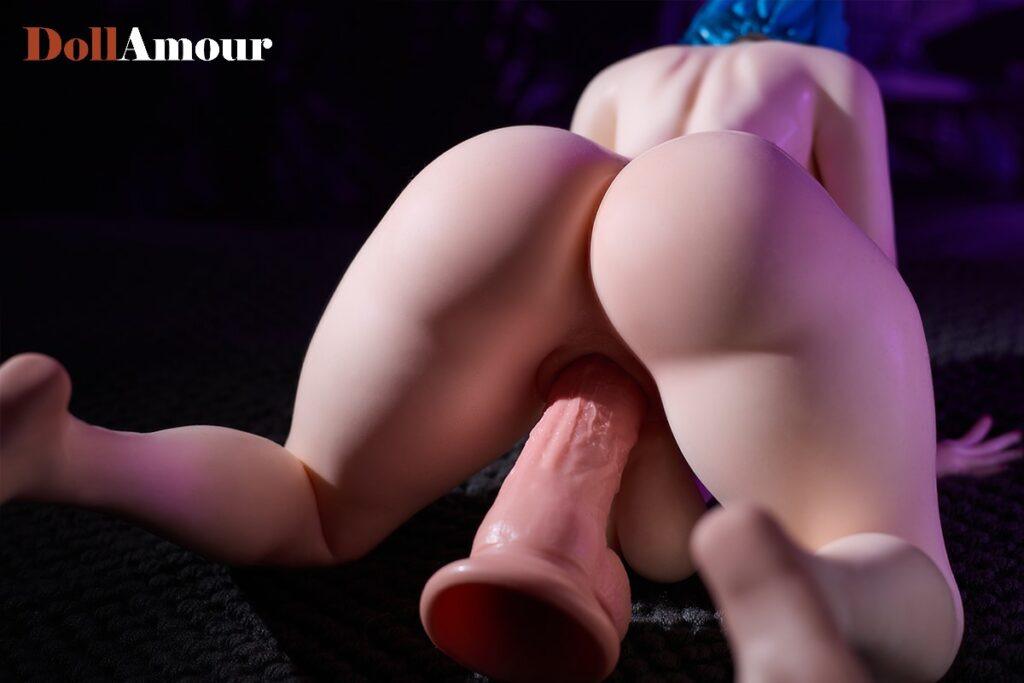
Historians believe sailors invented the sex doll during long sea voyages in the 16th century. They created simple cloth figures to ease loneliness and provide companionship. Over time, manufacturers developed more advanced sexdolls to meet similar needs. The main motivation has always centered on human desire for intimacy and comfort.
Key Takeaways
Sailors invented the first sexdolls in the 16th century to ease loneliness during long sea voyages.
Advances in materials like rubber and silicone helped make sexdolls more realistic and durable over time.
Modern sexdolls often include technology like artificial intelligence to offer companionship beyond physical needs.
People use sexdolls not only for sex but also for emotional support, friendship, and mental health benefits.
Artists and inventors have shaped sexdolls to explore ideas about identity, desire, and social norms.
Origins of Sexdolls

Sailors and Travel Ladies
The earliest known sexdolls appeared in the 16th century. French and Spanish sailors spent months at sea. They faced isolation and loneliness. To cope, they crafted simple dolls from cloth and old clothing. These figures, called “dames de voyage” or “travel ladies,” provided comfort and companionship. Sailors often shared stories about these dolls. Some believed the dolls helped maintain morale during long journeys.
Note: Sailors did not have access to real companionship on ships. The travel ladies served as substitutes for human intimacy.
The history of sex dolls began with these early creations. Sailors valued the dolls for emotional support. They also used them to satisfy physical needs. Over time, the idea of sexdolls spread to other groups who faced similar challenges.
Early Industry and Rubber Dolls
By the 19th century, new materials changed the way people made sexdolls. The rubber boom in France led to the first mass-produced rubber dolls. Manufacturers saw a growing demand for these products. They designed rubber dolls to look more realistic than cloth versions. Factories in France became leaders in this industry.
Some companies started to market sexdolls more openly. They targeted customers who wanted privacy and convenience. In the early 20th century, sexdolls were first advertised in porn magazines. This marked a shift in how society viewed these products. The connection between sexdolls and porn became more visible.
Rubber dolls offered several advantages:
Easier to clean
More durable than cloth
Greater realism
The early industry laid the foundation for modern sexdolls. Innovations in materials and marketing helped the industry grow. Today, people can trace the evolution of sexdolls back to these early developments.
History of Sex Dolls: Key Developments
20th Century Innovations
The 20th century marked a turning point in the development of sexdolls. New materials and changing social attitudes led to major innovations. In the 1930s, German artist Hans Bellmer created life-sized dolls as a form of artistic protest. He used these dolls to challenge ideas about the human body and control. Bellmer’s work influenced both art and the design of future sexdolls.
During World War II, rumors spread that German soldiers used an inflatable sex doll called the “Borghild Project” to reduce the spread of disease and boost morale. While historians debate the full truth of this story, the idea of the inflatable sex doll became popular after the war. Manufacturers in Europe and Japan began producing inflatable models for the public. These dolls were affordable and easy to store, making them accessible to more people.
Technological and cultural shifts continued to drive innovation throughout the century. Researchers have traced the evolution of sexdolls and related technologies using bibliometric analysis. Key developments include:
Scholars identified robotics and artificial intelligence as major drivers of change in sexdoll design.
The sex industry quickly adopted new technologies, pushing the boundaries of realism and interactivity.
David Levy’s 2007 book “Love and Sex with Robots” sparked academic interest in the field.
The introduction of Roxxy in 2010 marked the first personalized sex robot, representing a breakthrough in technology.
Researchers mapped the growth of sexdoll innovations using data from over 9,000 publications, showing a steady increase in interest and complexity.
The field now includes experts from technology, sociology, psychology, and philosophy, reflecting the cultural and ethical questions that surround sexdolls.
Note: The 20th century saw sexdolls move from simple objects to complex products shaped by science, art, and society.
Modern Artists and Inventors
Modern artists and inventors have played a key role in shaping the history of sex dolls. Their work explores themes of identity, desire, and the boundaries between art and technology. Several case studies highlight the creative and cultural impact of these figures:
Oskar Kokoschka created the Alma Mahler doll in 1919 after a personal breakup. He treated the doll as both a companion and a work of art, using it in public performances and paintings.
Amber Hawk Swanson, an American artist, commissioned a RealDoll in her own likeness between 2006 and 2011. She married the doll and used it in video and performance art to challenge traditional ideas about sexuality and gender.
Laurie Simmons, another American artist, produced “The Love Doll” photographic series from 2009 to 2011. She used a Japanese female sex doll to explore themes of care, femininity, and objectification in new ways.
These projects show how artists use sexdolls to question social norms and push creative boundaries. Their work often appears in academic studies and cultural discussions, highlighting the intersection of art, gender, and technology.
Tip: Modern inventors like Matt McMullen, creator of the first silicone sexdolls, have combined artistic vision with advanced engineering. His company, RealDoll, set new standards for realism and customization, influencing both the market and popular culture.
Today, the history of sex dolls reflects a blend of technological progress, artistic exploration, and changing cultural values. The inflatable sex doll remains a symbol of innovation, while modern artists and inventors continue to redefine what these objects can represent.
Modern Sexdolls

Contemporary Companies
Today, several companies lead the global market for sexdolls. These businesses use advanced materials and technology to create lifelike products. The industry has grown rapidly, driven by changing social attitudes and new innovations. Companies such as Lelo, Fun Factory, Doc Johnson, and Pipedream Products have become well-known names. They offer a wide range of products, including the modern version of sex dolls, which feature realistic skin, articulated joints, and even artificial intelligence.
The following table summarizes key trends in the contemporary sexdoll market:
|
Aspect |
Details / Numerical Evidence |
|---|---|
|
Report Title |
|
|
Market Coverage |
Global sex toys market including sex dolls segment |
|
Historical Data |
2018-2019 |
|
Forecast Period |
2021-2028 |
|
Product Segments |
Vibrators, Dildos, Anal Toys, Others |
|
Market Drivers |
Increasing acceptance, rising disposable income, technological advancements |
|
COVID-19 Impact |
Temporary decline in 2020, followed by rapid recovery and growth |
|
Key Companies |
Lelo, Fun Factory, Doc Johnson, Pipedream Products, and others |
|
Regional Insights |
North America leads in market share; Asia-Pacific expected to grow fastest |
Note: North America currently holds the largest share of the market, but Asia-Pacific shows the fastest growth rate.
Current Motivations
Researchers have found that people use sexdolls for many reasons. The user base mainly consists of single, middle-aged, employed men with higher incomes. Motivations go beyond sexual gratification. Many owners treat their dolls as companions or even as partners. Some people use sexdolls as substitutes for human relationships, while others see them as synthetic partners.
Users often seek emotional support and companionship.
Some treat dolls as spouses or close friends.
Many use dolls as masturbatory aids.
Owners may differentiate between using a doll as a sex toy, a substitute partner, or a synthetic companion.
Studies suggest that sexdoll ownership may reduce the likelihood of acting on harmful fantasies.
Researchers call for more studies to understand the psychological and social effects of sexdoll ownership.
Recent reviews highlight a lack of deep research on why people own sexdolls and how it affects their lives. Most available data comes from surveys and online forums, which do not always explain the full picture. Some experts suggest that sexdolls could help people with sexual dysfunction or serve therapeutic purposes. Others warn about possible risks, such as increased objectification. The evidence base continues to grow, but many questions remain about the impact of these products.
Inventors and Motivations Table
Throughout history, inventors and groups have created sexdolls for many reasons. Their motivations often reflect the social and technological context of their time. The table below summarizes key inventors and groups, along with their main reasons for developing sexdolls.
|
Inventor/Group |
Time Period |
Motivation(s) |
Notable Example(s) |
|---|---|---|---|
|
French and Spanish Sailors |
16th Century |
Companionship, loneliness relief |
"Dames de voyage" (travel ladies) |
|
French Rubber Manufacturers |
19th Century |
Realism, privacy, commercial demand |
Early rubber dolls |
|
Hans Bellmer (Artist) |
1930s |
Artistic protest, body exploration |
Life-sized dolls |
|
German Military (Rumored) |
WWII |
Morale, disease prevention |
"Borghild Project" inflatable doll |
|
Japanese and European Makers |
1950s–1970s |
Affordability, accessibility |
Inflatable dolls |
|
Matt McMullen (RealDoll) |
1990s–Present |
Realism, customization, companionship |
Silicone RealDoll |
|
Contemporary Companies |
2000s–Present |
Technology, AI, emotional support |
AI-enabled sexdolls |
Note: Motivations have shifted from simple companionship to advanced emotional and technological needs.
Historical research from institutions like the Lemelson Center provides detailed biographies and studies on inventors across many industries. These records show that inventors often respond to social challenges and technological opportunities. For example, researchers have documented how changes in materials, such as the rubber boom, led to new products and industries. Studies like “Historical Changes in the Demographics of Inventors in the United States” reveal that inventors’ backgrounds and motivations often reflect broader social trends, including migration, education, and cultural shifts.
This table highlights how the invention of sexdolls has always connected to human needs. Over time, inventors have adapted their creations to match changing attitudes, new materials, and advances in technology. The motivations behind sexdoll innovation continue to evolve, shaped by both individual creativity and wider social forces.
Sailors first invented sexdolls to fight loneliness and seek companionship. Over time, inventors and companies introduced new materials and technology, making dolls more realistic and customizable. Today, motivations include not only sexual needs but also companionship, mental health, and artistic interests.
Modern studies show that many owners value emotional fulfillment and realism.
The launch of RealDoll in 1996 marked a major shift toward lifelike, customizable dolls.
Researchers now recognize a wide range of motivations, including the search for the “perfect partner” and non-sexual relationships.
The reasons for creating sexdolls have changed with society and technology, but the desire for connection and comfort remains strong.
FAQ
What materials do modern sexdolls use?
Manufacturers use silicone, TPE (thermoplastic elastomer), and sometimes metal skeletons. These materials create realistic skin texture and flexible joints. Silicone offers durability and easy cleaning. TPE feels softer and more lifelike. Companies select materials based on safety, comfort, and realism.
Are sexdolls legal in most countries?
Most countries allow adult sexdolls. Some places restrict certain types, especially those resembling minors. Laws change by region. Buyers should check local regulations before purchasing. Legal status often depends on the doll’s appearance and intended use.
Can sexdolls provide emotional support?
Many owners report feeling less lonely with a sexdoll. Some treat dolls as companions or partners. Studies suggest sexdolls may help people cope with isolation or social anxiety. Emotional benefits vary for each person.
How do people maintain and clean sexdolls?
Owners clean sexdolls with mild soap and warm water.
Manufacturers recommend regular cleaning to prevent damage.
Some dolls have removable parts for easier washing.
Proper care extends the doll’s lifespan and keeps it hygienic.

